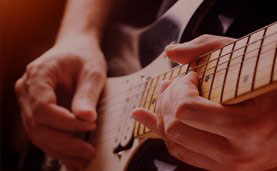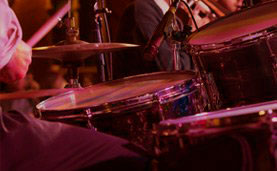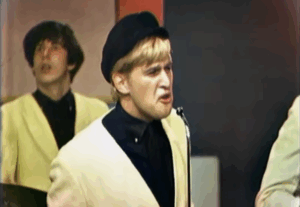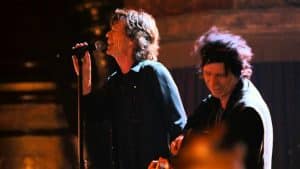Famous Rockstars That Joined The Disco Fever

The Rolling Stones live in 1968 - ABKCOVEVO / YouTube
When disco took over the airwaves in the late 1970s, it wasn’t just a passing fad—it was a cultural earthquake that reshaped popular music. The release of Saturday Night Fever in 1977 sent shockwaves through the industry, turning glittering dance floors and thumping basslines into symbols of the era. For rock fans, it was both fascinating and unnerving to see the genre’s dominance challenged by a sound built for movement, not rebellion.
As disco fever spread, it forced even the loudest guitar heroes to take notice. Rock musicians who once thrived on distortion and defiance found themselves drawn to the infectious rhythms dominating clubs across the world. Rather than resist, many chose to adapt, adding grooves, strings, and polished beats to their once-gritty formulas. The shift wasn’t always seamless—but it showed how quickly musical boundaries could blur when trends caught fire.
From smoky arenas to mirrored dance floors, the late ’70s became a rare crossroads where rock swagger met disco sheen. Some bands embraced the change for artistic exploration, others for survival, but all left behind fascinating experiments that still spark debate today. Here’s how a handful of rock’s biggest names swapped leather for glitter and joined the disco craze that swept the world.
The Rolling Stones – “Miss You” (Some Girls, 1978)
By the late ’70s, even the Rolling Stones couldn’t resist the magnetic pull of disco. “Miss You,” a slick, bass-driven track from Some Girls, became one of the defining hits of 1978, soaring to No. 1 despite confusing and even angering longtime fans. Mick Jagger, inspired by the nightlife and pulse of New York City, captured the energy of Studio 54 in a song that blurred the line between rock and dance music. It was a daring step into unfamiliar territory for a band that had built its name on raw blues and swaggering riffs.
Keith Richards admitted that the song started as an experiment to “keep Mick happy” after his frequent disco outings, but the groove proved irresistible. What began as a tongue-in-cheek project turned into a rhythm that the band couldn’t ignore. The four-on-the-floor beat, steady bassline, and bluesy harmonica made “Miss You” unlike anything they had done before. It was both danceable and distinctly Stones, a hybrid sound that defined the band’s late ’70s reinvention.
While Jagger dismissed claims that “Miss You” was pure disco, he acknowledged its influence. “Disco records at that time didn’t have guitars much,” he said, “and they all had shimmering string lines.” The Stones’ version kept its edge intact, replacing syrupy strings with sharp rhythm guitar and attitude. The result was a track that not only topped the charts but also proved that even rock’s most rebellious icons could strut across the dance floor.
Rod Stewart – “Da Ya Think I’m Sexy?” (Blondes Have More Fun, 1978)
Rod Stewart’s venture into disco may have been commercially golden, but it came with a heavy price. “Da Ya Think I’m Sexy?” shot straight to No. 1, transforming Stewart from raspy rock frontman to glamorous hitmaker — and alienating a chunk of his core audience in the process. The singer later admitted that the backlash stung deeply, calling it “bittersweet success.” Rock purists accused him of selling out, while Stewart saw it as a playful experiment that unexpectedly became a global anthem.
Behind the scenes, the song was built with precision. Stewart collaborated with keyboardist Duane Hitchings and drummer Carmine Appice, who recalled that the singer wanted something that matched the Rolling Stones’ “Miss You.” The result was a funkier, more polished groove, supported by a full orchestra and high-register backing vocals that leaned even more toward pop than rock. It was sleek, sexy, and undeniably of its time — the sound of a rocker surrendering to the dance floor.
Yet success took its toll on Stewart’s spirit. He admitted that fame and ego began to blur his artistic judgment after the song’s explosion. “After ‘Da Ya,’ I almost lost interest in music altogether,” he said. For better or worse, the track remains one of his most recognizable songs — a shimmering example of how the disco era could lift an artist to new heights while also challenging their sense of identity.
Paul McCartney and Wings – “Goodnight Tonight” (Single, 1979)
Paul McCartney was no stranger to experimentation, and when disco fever hit, he was quick to join the dance. “Goodnight Tonight,” released as a stand-alone single in 1979, offered a lighter, more sophisticated approach to the genre. Driven by a groovy bassline and a flamenco-inspired guitar solo from Laurence Juber, the song found McCartney embracing rhythm and melody with playful confidence. Initially set aside as a poor fit for Back to the Egg, the track eventually made its way out of the vault when McCartney realized how infectious it was.
The former Beatle admitted that he almost scrapped the song entirely, fearing that critics would tear it apart. But after hearing it at parties and getting positive feedback, he decided to trust his instincts. The gamble paid off — “Goodnight Tonight” climbed to No. 5 on the charts and became one of Wings’ most enduring late-era hits. McCartney’s melodic instincts paired perfectly with the danceable beat, proving he could thrive in any musical environment.
Drummer Steve Holley later revealed that the song was inspired by a night out dancing with Linda McCartney, which spurred Paul to rush into Abbey Road Studios in the early hours to capture the groove. By layering his own instrumentation before the band joined in, McCartney created something both personal and timeless — a disco hit with the warmth and wit of a classic McCartney tune.
Blondie – “Heart of Glass” (Parallel Lines, 1978)
When Blondie released “Heart of Glass,” they didn’t just flirt with disco — they dove in headfirst and redefined what a crossover hit could sound like. Emerging from New York’s punk and new wave scene, the band shocked their peers by crafting a shimmering dance track that topped charts worldwide in 1979. Debbie Harry and guitarist Chris Stein had written the song years earlier, experimenting with different styles before finally perfecting it as a sleek, electronic disco anthem.
The move wasn’t universally welcomed. At the time, rock and punk circles were fiercely anti-disco, and Blondie faced backlash from fans who saw the shift as a betrayal. Drummer Clem Burke even refused to play it live at first, only relenting when the song became an unstoppable hit. “People got nervous and angry about us bringing different influences into rock,” Harry recalled — but the band refused to apologize for their musical curiosity.
Blondie’s disco detour wasn’t a sellout — it was innovation. Chris Stein said the band was more influenced by Kraftwerk than the Bee Gees, and the result was something futuristic and fresh. By blending punk attitude with disco rhythm, Blondie didn’t just join the trend — they reshaped it, creating a track that bridged the gap between underground cool and mainstream success.















